 |
New York
Architecture Images- Midtown Harvard Club Landmark Top Ten New York Clubs |
|
architect |
Charles F. McKim of McKim, Mead and White |
|
location |
27 W44, bet. Fifth and Sixth Aves. |
|
date |
1894, enlarged in 1905, 1915, 1946 and 2003. |
|
style |
Neo-Georgian |
|
construction |
brick, stone trim |
|
type |
Club |
|
images |
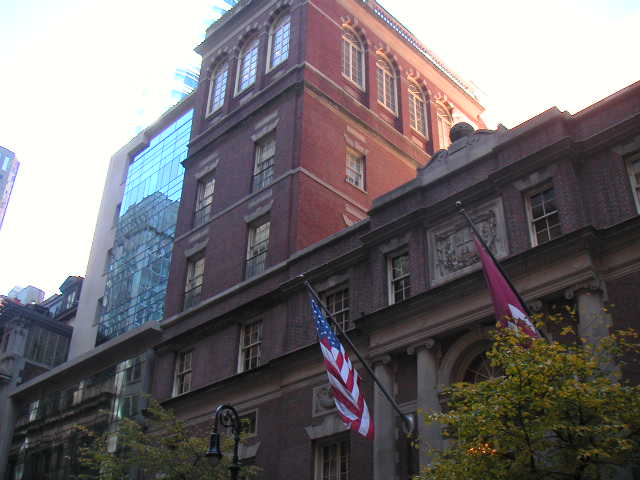 |
|
The History of the Clubhouse
"The name or title by which the society or Club into which we desire to form ourselves as aforesaid shall be known in law, shall be the HARVARD CLUB OF NEW YORK CITY The particular business and object of such society or club shall be to promote social intercourse among ourselves and others, our associates and successors, who are to be persons who have been connected with Harvard University as students or instructors, or who have received honorary degrees therefrom, and for that purpose to establish and maintain in the City and County of New York, for the use of ourselves and such others above mentioned, a club house, having a library, a reading room, a gallery of art, and such other appurtenances and belongings as are usual in clubs and club houses." From the Certificate of Incorporation, April 16, 1887 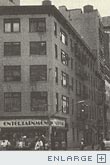
In the beginning, of course, was the Club and the Club was without bed or board. That is, the Club had no house. The first meeting of the Club was held at the Mercantile Library Building on Astor Place. There were four members in attendance that night. As membership grew, the Club needed larger meeting space. Usually, members made do with a private dining room at a restaurant. The famous Delmonico's was a frequent choice. From the original four, membership grew to 16 by the end of 1865, which was considered large enough to incorporate. The Club began renting a room over another restaurant at 835 Broadway for its monthly meetings, but Delmonico's was still used occasionally. Until mid-1887, this arrangement in-which the Club owned its space one night at a time, seemed sufficient. 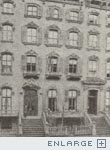
The Club continued to grow. By July 1886, membership had risen to 431. While the Harvard Club's meetings were held in the "Club District," it did not have its own clubhouse as most of the others did. Many of the members were young, single men living on their own in New York away from their families. A club that could offer lodgings seemed like an attractive substitute for home and hearth. In early 1887, the Club signed a lease on a four-story brownstone residence at 11 West 22 Street and converted it into a clubhouse with 10 bedrooms, a restaurant, and other clubrooms where members could read periodicals, smoke, and chat. 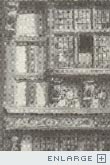
The Clubhouse was an instant success. By 1888, membership jumped to 531, an amazing 25 percent increase in one year. However, at $6,000 per year, the rent on the brownstone was steep. Dues for resident members more than five years out of school doubled to $20 per year to support the new Clubhouse. Strong sentiments arose for Club-owned real estate vs. paying rent. However, the Club had few resources with which to acquire property. Around this time, many other clubs were moving uptown to 43rd and 44th Streets. An anonymous member challenged the Harvard Club to raise money from its members to purchase a property which was available at 27 West 44th Street. If the Club would try, he said he would guarantee the results. The challenge was accepted and former Club President Joseph H. Choate was named head of a building committee. The Committee chose popular architect Charles F. McKim for the project. Because he and other members preferred traditional styles, Mr. Choate directed the architect to model the facade on a house in Stratford-on-Avon, England, which was once occupied by John Harvard's mother. However, Charles McKim ignored the direction, presenting a facade in the Neo-Georgian style. Apparently, McKim favored that style for several reasons. He had won prizes for designs in that style, he had used the style in designs for other clubhouses, and the style was very popular at the time. His final reason persuaded the membership of the Club to accept the more modern style; it was reminiscent of many buildings at Harvard that had been built in the Georgian style. 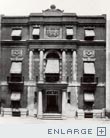
In 1894, the Harvard Club had the small clubhouse designed by Charles F. McKim of the firm McKim, Mead, and White constructed on the recently acquired property at 27 and 29 West 44th Street. This area of town was quickly becoming a center for clubhouses. In just a few years, the New York Yacht Club, the Century Club, The Yale Club and others also were built in the neighborhood. The Clubhouse was small compared to its neighbors, filling only the front half of the two 25-by-100-foot lots. It was a three-story Neo-Georgian structure that included a kitchen in the cellar, a dining room on the first floor, and meeting rooms on the second and third floors. At the time Harvard House, as they called the new clubhouse, was being constructed, members of the Club bought land at 31 West 44th Street and 26-36 West 45th Street with the express purpose of holding it until the Harvard Club needed to expand. The lots would then be transferred to the Club at cost. The members also tried to purchase 33 and 35 West 44th Street, but were unsuccessful at that time. 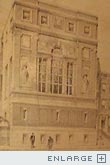
The land speculation proved to be prescient. Less than 10 years after opening, Harvard House was already too small for the burgeoning membership and, in 1905, the first addition was built, which included the magnificent Harvard Hall. Many architectural observers consider Harvard Hall to be the finest clubroom in the Western Hemisphere, if not the world. With its three-story-high ceiling and rich, dark paneling, it is truly a special place. Besides Harvard Hall, the 1905 addition contained a Grill Room, a new Library, a meeting room, a billiard room, and two floors of bedrooms. The new structure extended the original building an additional 150 feet to 45th Street, but did not increase the width of Harvard House. The dining room was moved from the entrance hall into both Harvard Hall and the Grill Room. With the additional space in the public rooms and the opening of bedrooms for overnight stays, Harvard House had truly become a Club that could stand with any in the city. As a result, the Club attracted more and more members. 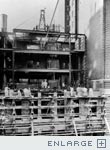
After another 10 years, Charles McKim was at it again, adding a seven-story tower in 1915. The tower was 60 feet wide at the rear (45th Street) facade, but only 25 feet wide at the front. 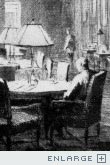
Although, the Club had wanted a 50-foot-wide addition, it was unable to strike an agreement to acquire 33 West 44th Street. So the smaller building was constructed. It added a bar, a magnificent formal dining room, additional banquet rooms, additional bedrooms, squash courts, and a swimming pool (the Plunge) on the seventh floor. The Clubhouse also added a few modern conveniences. Elevators were installed along with a boiler for steam heat. Previously, the Clubhouse had been heated by fireplaces. 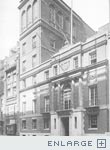
Club membership kept growing. Ten years later, in 1925, the Clubhouse was in need of expansion again. However, the Club had no land on which to build. Negotiations for the adjacent property at 33 West 44t Street were reinstated and continued for the next six years. But, by the time the property was finally transferred to the Club, the Great Depression began and the Club, like the rest of the country, had to tighten its belt. Then World War II broke out and, with it, material shortages. Dreams of expansion were tabled for the duration. While the Clubhouse was stuck at its 1915 size, membership was not. During World War II, the demand for bedrooms was so great, the Club sacrificed the Plunge. It was floored over to create dormitory space where members could rent a cot for the night. 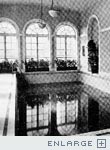
After the war, veterans, taking advantage of the G.I. Bill, began to flood Harvard and other universities. The Club realized that, with so many matriculations at Harvard, membership would continue to increase. Yet there were still several problems to be solved. The Club did not have a big budget for expansion. However, since 1931, the Club had owned the adjacent property at 33 West 44th Street. It was thought that it might be possible to expand the Clubhouse into the building at low cost. But alas, the floors of the five-story structure were not aligned with those of the Clubhouse except at the first floor. Worse, the top three floors were constructed of combustible materials and legally could not be used for clubrooms. 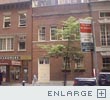
The solution: To tear down the three upper floors and remodel the lower two. The facade of the building was remodeled by a little-known architect who was a member of the Club. The design of the facade, a conscious effort to imitate McKim's Neo-Georgian style, is generally conceded to be uninspired and unsucessful. The two floors of the small building provided little additional facilities--some staff offices, an extension to the Ladies' Dining Room (now the Cambridge Rooms), a men's restroom, and the present Main Bar. There the Clubhouse has remained for the past 54 years, while the membership has continued to grow. The Clubhouse was one of the first buildings to be named a New York City Landmark because of its architectural beauty and its history. www.hcny.com |
|